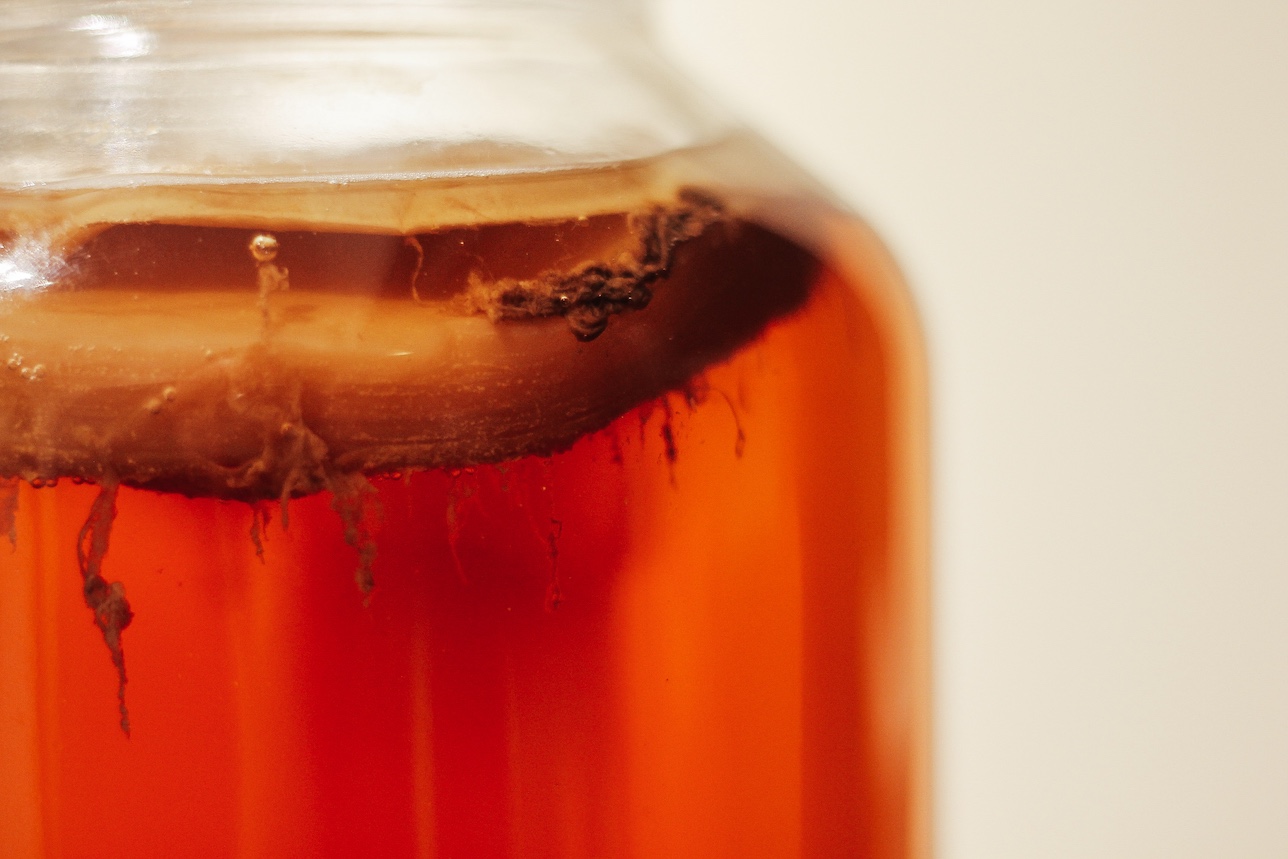Its high levels of probiotics and vitamins make it an incredibly healthy drink
Kombucha is a drink with many nutritional properties which have helped it to gain popularity in recent years. Despite its newfound fame, kombucha is a drink with ancient origins, given that it is believed to have been invented in China some 2,000 years ago. There are theories that it made its way to Europe through Russia in the 20th century, but today it can be found all around the world.
So, what exactly is kombucha? This drink is made from fermented green or black tea which is mixed with a combination of bacteria and yeast, ingredients that give it its probiotic properties. It is fermented for a few weeks so that it can acquire its health benefits.
The fermentation process of kombucha is very similar to that of sauerkraut or yogurt. This is how its probiotics are produced, and the process also generates very low levels of alcohol.
Properties of Kombucha
Kombucha is a very healthy beverage thanks to its numerous probiotics and nutrients. To begin, its natural fermentation process creates lactic acid bacteria that can help with the probiotic functions of the intestine. These probiotics can also help to strengthen the immune system and promote healthy digestive functioning.
Furthermore, kombucha contains Vitamins C, B6, and B12, along with antioxidants. There are also studies that demonstrate that this fermented tea can minimize the risk of heart disease, help to control diabetes, and even protect against cancer.
How To Make Homemade Kombucha
Though nowadays kombucha is commercialized by a wide variety of brands, it can also be made at home.
To make homemade kombucha, the only ingredients that you need are filtered water, green or black tea, sugar, a little bit of already made kombucha, and SCOBY, the symbiotic culture of bacteria and yeast that cause the beverage to ferment. You can purchase SCOBY, which has the appearance of a small disk, at a health food store, or you can ask for it from someone who has already made their own homemade kombucha.
The first step in making homemade kombucha is to boil 250 ml of chlorine-free filtered water, into which you must dissolve 50 g of sugar and steep a green or black tea bag, removing the tea after 7-10 minutes. Next, add 750 ml of cold chlorine-free filtered water.
Transfer to a sterilized glass jar. Once fully cooled, add a small SCOBY disk and 100 ml of already made kombucha, assuring that about 5 centimeters of air remain at the top of the bottle, which is necessary for the growth of the SCOBY.
Cover the jar with paper towel, sealing with a rubber band, and let ferment at room temperature for 6-9 days, out of direct light and heat.
After this time, strain your kombucha and transfer to glass bottles for the second round of fermentation, being sure to leave at least 4 centimeters of air at the top. At this time, you can also add other flavors, like fruit or spices. Cover well and let ferment again at room temperature for 3-10 days. Try the drink every few days and transfer to the fridge once you have acquired your desired flavor and carbonation.
Tips and Recommendations
It is very important that all materials be clean and sterilized throughout the entire process of making kombucha. If the proper sterilization measures aren’t implemented, the drink can easily become contaminated due to the presence of bacteria.
You will also have to purchase filtered water, since the presence of chlorine in tap water can inhibit fermentation. Try to let the beverage ferment between 21 and 30 degrees Celsius. Be careful with the bottles during the second fermentation, given that the pressure caused by the carbonation can cause them to explode if not enough space is left at the top.
Finally, you can experiment with many flavors when making homemade kombucha. Consider adding citrus fruits, berries, dried fruits, or spices like turmeric or cinnamon to create a unique and creative beverage.
Kombucha is a versatile drink that can have many health benefits, and thanks to the fact that it is so easy to make at home, it can be enjoyed on a variety of occasions.













